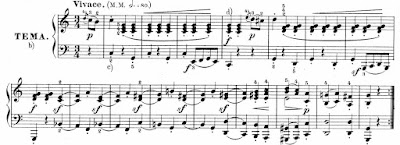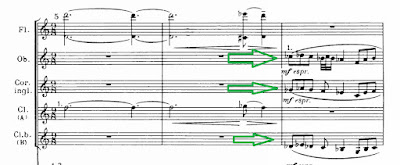CCXXXVI. RILEY, Terry (1935- )
The Cusp Of Magic (2004)
1. The Cusp of Magic
2. Buddha's Bedroom
3. The Nursery
4. Royal Wedding
5. Emily and Alice
6. Prayer Circle
Kronos Quartet
Wu Man, pipa, toys
(41:15)
"Usually the more highly evolved individuals born on this day (June 24th, Riley's birthday) are attracted to spiritual pursuits which they see as manifesting Divine Love. Those on their path to this ultimate goal cultivate kindness, awareness, sensitivity, psychic abilities, religious fervor, and respect for all living things."
-- Gary Goldschneider and Joost Elffers, The Secret Language of Birthdays [sln.ne]
Hmm. Wonder what it says about me:
THE DAY OF GLARING TRUTH
CURIOUS / KNOWLEDGEABLE / IMPRESSIVE
JUDGEMENTAL / ACCUSATORY / SELF-RIGHTEOUS
Oh well.
**
Commissioned by Kronos for a work celebrating his 70th birthday, Riley decided to a pipa to the mix:
"In this work, the different timbre and resonance of the pipa and the Western string quartet highlight the boundary regions of cultural reference, so that the Western musical themes might be projected with an Eastern accent and vice-versa. My plan was to make these regions seamless so that the listener is carried between worls without an awareness of how he/she ends up there." -- TR
1. The Cusp of Magic
The Peyote Ritual. Drum and rattle. Expansion and contraction.
The pipa's entrance is like a psychedelic banjo being played from a porch swing painted in bright neon colors. The music builds towards an electric climax.
2. Buddha's Bedroom
The pipa is further integrated into the quartet mix here, which moves between pizzicato and arco.
Wu Man sings the lullaby in Chinese:
"Mama's back home, my sweet baby, please go to sleep ..."
The music seems to alternate between some monochordal Bartókian rhythms to Wan playing some jazzy, string-bending licks on the pipa.
3. The Nursery
Here Wan sings a lullaby written by Riley, again in Chinese, and later in the background of the mix in English:
"Little clown, rest your head and don't you fret ...
The best times for you are coming yet ..."
The pipa takes on a mandolin-like quality over softly-bowed chords by the quartet. The movement ends in a ethereal cloud of harmonics, percussion, and some bizarre laughter!
4. Royal Wedding
Here Riley exploits his deep knowledge of classical Indian ragas, using a 16-beat gat as the basis for the music. But as East meets West, there is modulatory repeating chords in the strings with Wan's pipa joining in percussively ...
5. Emily and Alice
Emily is David Harrington's (first violinist) granddaughter and Alice is Janet Cowperthwaite's (Kronos' manager) daughter. Harrington:
"Terry called me and said that he wanted to create a magical experience for Kronos and our listeners, and that's when I said to him that one of the most amazing experiences I've ever had was carrying my infant granddaughter and playing her the musical toys I've collected from varous tours. He decided that these sounds should be in this piece, and came over to the house during Emily's nap. Terry and I had fun playing with Emily's toys and some of Alice's toys as well, which were borrowed for the occasion, and sampled the sounds."
A magical experience, yes ...
6. Prayer Circle
The Peyote Ritual concludes with the sunrise. Similar to a passacaglia or chaconne, Riley incorporates a Cuban montuno to suggest southern warmth.
The music builds up in irregular rhythms to an ecstatic climax.






















































